The social media landscape is constantly changing. Brands that want to succeed in 2025 need to do more than just show up on social media. Success requires strategic engagement, an understanding of shifting demographics, and knowing which platforms to use—and when—to maximize reach and deepen audience engagement. This comprehensive guide takes a closer look at the top social media platforms and the new trends that are crucial for brand growth in the US, helping you establish a strong digital presence.
Top Social Media Platforms for Maximum Reach & Engagement (2025)
These platforms offer substantial reach with their user bases and features that most would consider critical for social media strategies.
1. Facebook (Meta)
- Founded in: 2004
- Monthly Active Users (2024/2025): As of 2024, with 2025 just around the corner, Facebook has over 3.07 billion monthly active users. As of January 2025, there are roughly 197 million users in the U.S. alone.
- Demographic: When looking at demographics globally, the user base consists of about 56.7% males and 43.3% females. In the US, the most significant age group is between 25 and 34 years old. However, it continues to be widely used by Generation X and Baby Boomers, illustrating Facebook’s extensive appeal across various age brackets.
Even if there is an argument that it is less popular with younger users, Facebook is undeniably still a titan of social media. Notably, 67% of Millennials believe it’s essential for small businesses to have a presence either on a website or on Facebook.
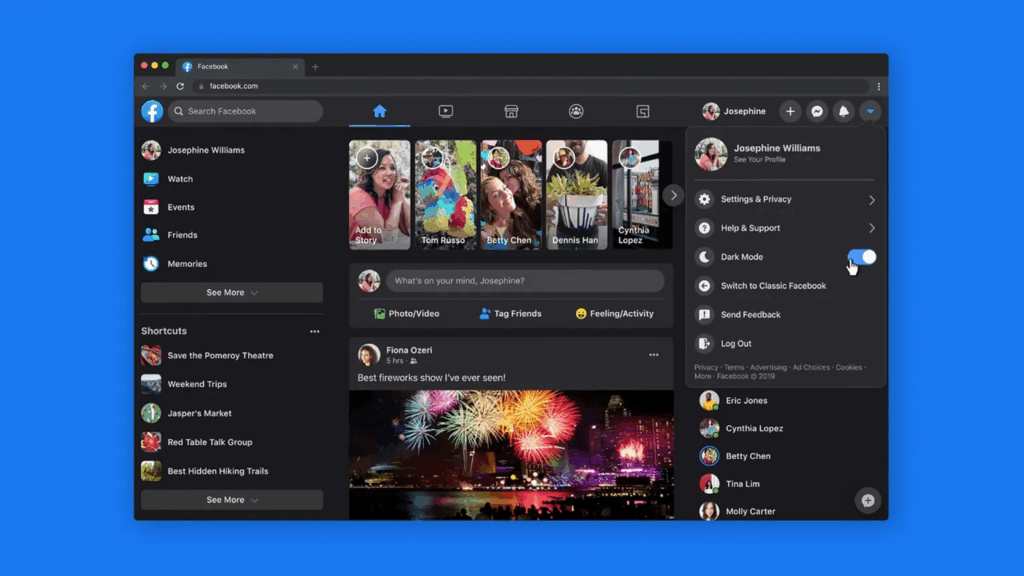
Facebook Groups continue to excel at building community, and the platform offers unmatched advertising tools with precise targeting options. Plus, its seamless integration with other Meta-owned apps like Instagram and WhatsApp enhances its utility.
Brands have the opportunity to use a variety of content formats, such as Live videos, Stories, and Reels, which help them connect with a wide audience. Facebook can increase a brand’s visibility with awareness ads, localized advertising campaigns, and provide direct customer support and brand loyalty through private groups. Facebook Shops help in e-commerce directly within the platform.
2. Instagram (Meta)
- Founded in: 2010
- Monthly Active Users (2024/2025): This platform boasts over 2 billion monthly active users worldwide, with around 172 million of them in the United States as of January 2025.
- Demographic: The global user base is made up of roughly 52.7% male and 47.3% female users. In the U.S., however, the numbers lean a bit towards the female side, with 55.4% identifying as female and 44.6% as male. About two-thirds of the platform’s users are between the ages of 18 and 34, making Gen Z and Millennials its main demographics.
Instagram remains a powerhouse for visual storytelling and content. It’s become essential for brands looking to emphasize aesthetics and lifestyle. The platform’s focus on high-quality images and short-form video content (like Reels) makes it perfect for showcasing products, building a solid brand identity, and running effective influencer marketing campaigns.
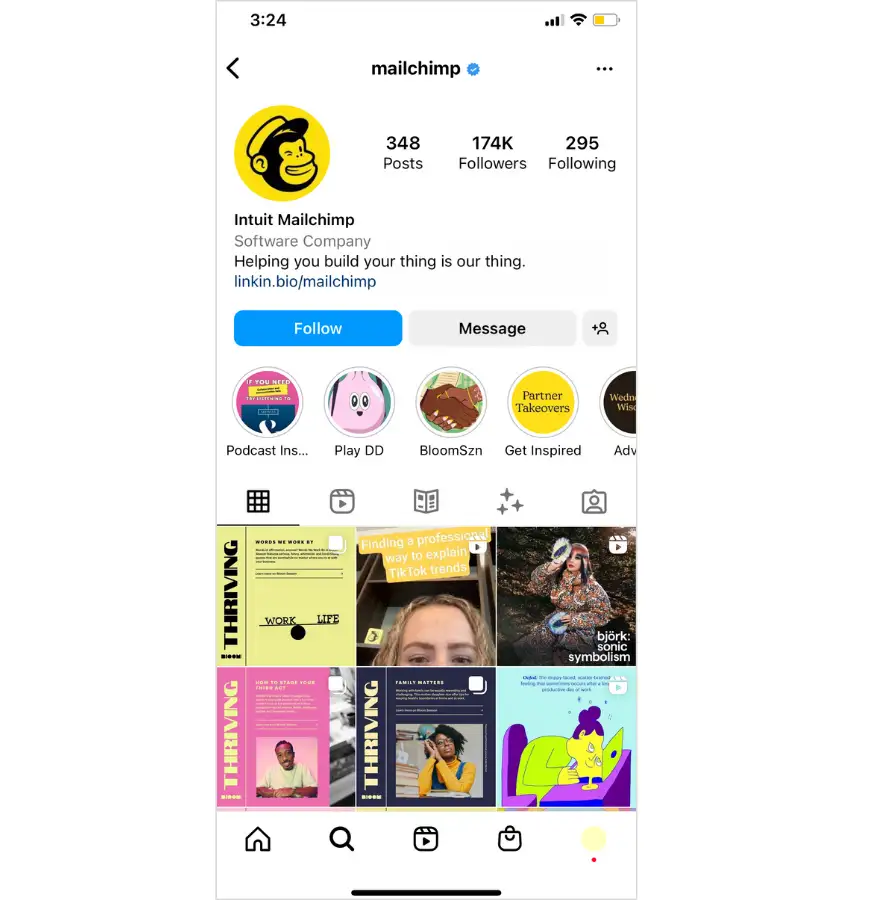
If you want to grow your brand, Instagram is definitely the way to go. It’s an ideal platform for visually presenting your offerings and driving sales, especially with its Instagram Shopping features.
In fact, 61% of Generation Z thinks brands should be on Instagram, and almost half of Millennials are buying from there. Furthermore, Instagram is the social media channel with the best engagement, making it a natural fit for brands in fashion, beauty, and Direct-To-Consumer (DTC) to convert their visual appeal into a tangible sale.
3. YouTube (Google)
- Founded in: 2005
- Monthly Active Users (2025): Over 2.5 billion globally, with approximately 253 million users in the United States.
- Demographic: Worldwide, the demographics are 54% male 46% female. In the U.S., it is widely popular across nearly all age groups and demographics. The aggregation of 25-34 year olds is the largest user base (21.7% global). 93% of 18-29 year olds in the United States use YouTube, which demonstrates how far reaching YouTube is in young generations.
In addition to being a video platform, YouTube is the second-largest search engine in the world, so this makes it an important element of video content and discoverability.
YouTube’s strength is in long form content, such as tutorials, product reviews, and storytelling focused on the brand, which is a valuable way to build trust and authority with the audience.
The introduction and growth of YouTube Shorts also allows brands to compete directly with TikTok and Instagram Reels for short-form video attention. Brands can significantly boost their growth through educational content, showcasing their narrative, leveraging SEO to improve video discovery, and cultivating a loyal subscriber base.
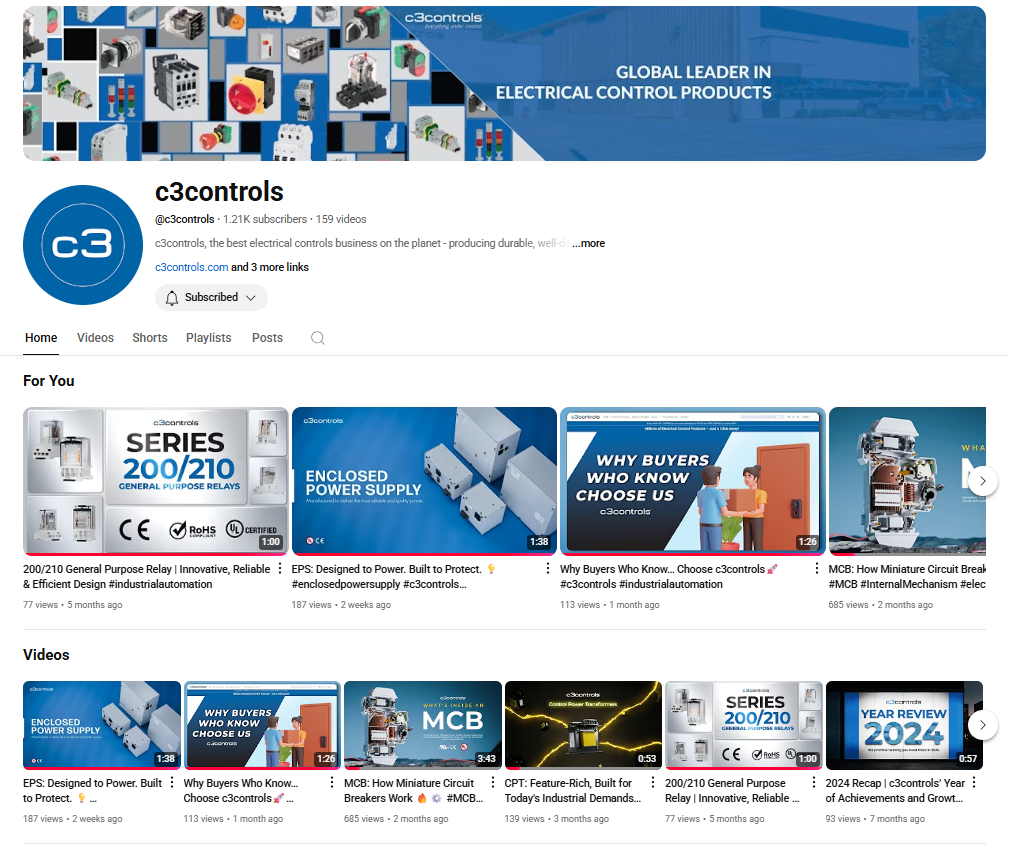
In 2024, more than half of marketers increased their YouTube budgets.
Marketers recognize YouTube’s highly diverse audience and are becoming an important part of the customer journey. YouTube also grew capabilities for e-commerce with shoppable video ads, and as marketers roll out additional uses of AI, such as video variations, the likelihood of direct conversions with shoppers is improving.
4. TikTok
- Founded in: 2016 (international version)
- Monthly Active Users (2024/2025): 1.5 billion users worldwide, approximately 140 million users in the US.
- Demographic: Mainly popular among Gen Z and younger Millennials; globally, the users aged 18-24 are 30.1% and aged 25-34 are 29.5%. In the US, 33% of adults use TikTok, with 78% of Gen Z using TikTok and two-thirds of them on the platform daily.
TikTok is continuing its upward growth trend, particularly among younger groups in the US, thanks to its functionally powerful algorithm that helps to propel viral reach and experience highly engaged users. TikTok is simply a great platform for brands to grow, build creative branding using trending sounds and challenges, and authentically and relatably connect with Generation Z and younger Millennials.
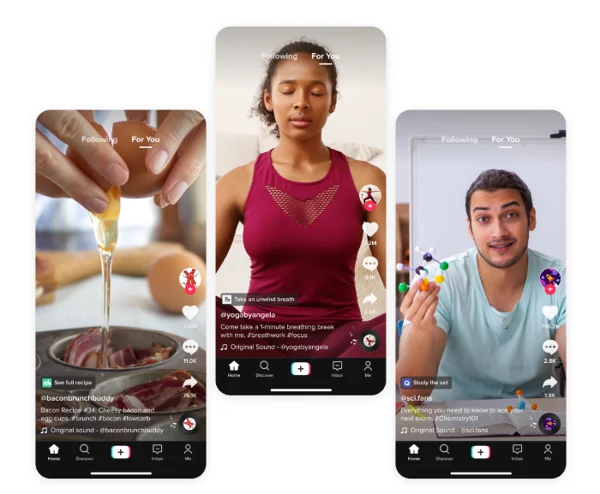
In the last two years, searches for “TikTok marketing” have jumped by an impressive 150%. Plus, 55% of marketers are looking to boost their TikTok ad budgets in 2024. When it comes to influencer marketing in this sphere, working with micro-influencers tends to yield the best results.
The expanding TikTok Shop integration on the platform provides a great opportunity for direct selling, with Live Shopping events especially successful in driving conversions. 48% of Gen Z-TikTok users purchase on TikTok at least once in a month. Brands that go authentic and AI-powered to create content and identify trends will garner huge returns on TikTok.
5. LinkedIn
- Founded in: 2002
- Monthly Active Users (2025): Estimated 310 million MAU worldwide (with over 1 billion registered members). 234+ million members in the US.
- Demographic: 56.9% Male, 43.1% Female globally. At the global scale and in the US, 25-34 is the largest group of users, representing 47.3% (globally) of users. LinkedIn has a highly educated audience, with over 52% of users having a college degree and a portion with high household income (over $100k annually).
LinkedIn is the go-to platform for B2B marketers, professional networking, and establishing themselves as industry thought leaders. LinkedIn remains one of the most effective platforms for reaching highly targeted professional audiences with outreach tools and talent recruitment capabilities. LinkedIn can also be used as a platform for B2B lead generation, culture-building for businesses, sharing industry insights, and professional networking.
LinkedIn’s analytics dashboard caters to in-depth metrics on content performance, visitor demographics, follower growth, leads generated, newsletter engagement, and competitive analysis.
LinkedIn Ads and sponsored content work best at grabbing the decision-makers and professional audience, working with the active participation of LinkedIn Groups relevant to your industry, thereby boosting engagement and visibility.
6. X (formerly Twitter)
- Founded in: 2006
- Monthly Active Users (2025): 586–650 million users worldwide, with 106.23 million in the United States, according to estimates.
- Demographic: On the world stage, there is a distinct male majority with 59–68.66% male users and 31.34–41% female users. Generally, the largest age group is made up of the 25–34 years group (30 – 36.6%), followed by the age 18–24. Surprisingly, the users referred to in this phase have higher household incomes and educational statuses with college degrees in the US.
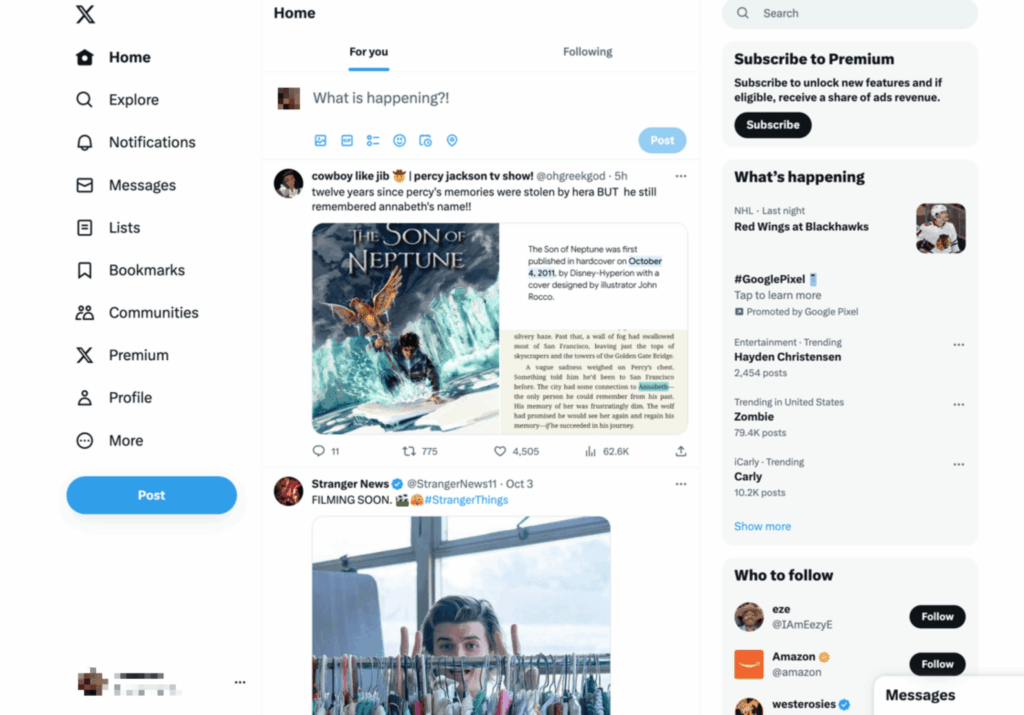
X remains the first choice for live news, fast updates, and conversations with the public. X is a lively space to distribute information quickly to a wide audience and to provide customer-relationship management.
Brands can use X to its maximum potential by putting themselves out there, building thought leadership, responding quickly to customer queries, participating in trending conversations, and driving traffic to their website with fun and exciting updates.
Users can add up to 25 threaded sub-posts to one post in order to facilitate more in-depth discussions. In the free version, posts are limited to 280 characters, which is helpful in keeping the messaging short but impactful. For added impact, consider joining Twitter Spaces, where you can engage in live audio chats to elevate engagement and get closer to your audience.
7. Pinterest
- Founded in: 2010
- Monthly Active Users (2024/2025): Over 522-553 million globally, with approximately 89.9 million users in the US.
- Demographic: It has a very strong female-skew of users across the globe (around 69.4-70.3% female, 22.4-30% male). The largest age segment is women 25-34 globally (20.4%), with users aged 18-24 next. A large percentage of users in the US have higher household incomes, demonstrating notable purchasing power.
Pinterest is a powerful visual search engine. Generally, users find their way to Pinterest with strong buying intent, actively looking to plan purchases and to discover new products. Pinterest’s visual nature lends itself to some very specific and strong niches, including home decor, fashion, do-it-yourself, recipes, and wellness, but brands can use Pinterest for product discovery, driving traffic to their website, visually inspiring audiences, and even selling products directly using shoppable pins and storefronts.

The main usage of Pinterest (85% of users) is planning purchases, which is a key moment in the consumer journey. Properly utilizing this channel will depend on three main things: high-quality, visually appealing pins and boards with concise calls to action; backing and organizing themed boards that resonate with your audience.
8. Snapchat
- Founded in: 2011
- Monthly Active Users (2025): More than 900 million users worldwide, with a strong US base of users primarily made up of a younger demographic.
- Demographic: Globally, 51.5% female, 47.9% male. Over 75% of 13-34 year olds in 20+ countries use Snapchat, making it highly favored by Gen Z and younger Millennials. 51% of users on Snapchat are from Gen Z.
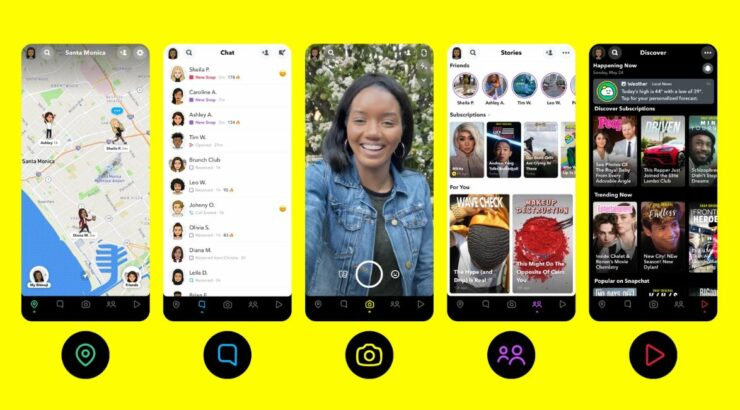
Though frequently thought of as a younger demographic, Snapchat’s innovative Augmented Reality (AR) capabilities and focus on ephemeral content provides brands with unique opportunities for playful and hyper engaging marketing tactics. This includes targeting a brand’s Gen Z clientele through interactive AR experiences, such as virtual try-ons or branded lenses, which tend to thrive off of user-generated content and organic sharing.
Because of its focus on ephemeral content and creative ad formats, it lends itself to some highly engaging campaigns that build on traditional, visually-driven marketing efforts, which resonate better with a younger, visually-driven audience.
9. WhatsApp (Meta)
- Founded in: 2009
- Monthly Active Users (2025): Over 3 billion globally. In the US, approximately 98 million users.
- Demographic: Globally, male 51.8% and female 48.1%. US: 36.4% Millennials and 23.6% Gen Z = over half of users (most popular between ages of 18 and 34).
As the leading messaging app around the world, more businesses in the US are turning to WhatsApp for personal (one-on-one) and group messaging and it is a great tool for direct engagement with your consumers/customers. WhatsApp makes it easier for brands to have personalized customer service communication, share time-sensitive updates on offers, products, showcase products or even broadcast to the community exclusive deals.
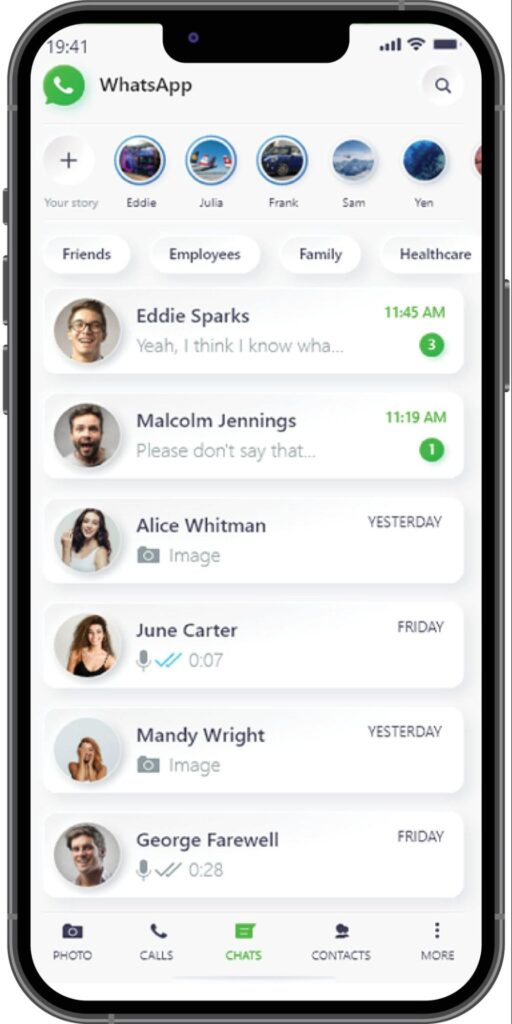
The WhatsApp Business platform offers advanced automation tools to streamline customer interactions, building trust and loyalty through direct, private conversations that bypass public social media feeds. This direct messaging capability is increasingly vital as consumers demand more personalized and immediate customer support.
10. Telegram
- Founded in: 2013
- Monthly Active Users (2025): Global 1 billion+. Total downloads in the US are ~26.9 million (in 2023). Approx ~ 9% of Americans use Telegram regularly.
- Demographic: Global avg ~ 56.9-58% male, 42-43% female. Over half of Telegram users (53.2%) are 25-44 years old.
Telegram has strong privacy protections. You can also create very effective and strong channels to get messages to unlimited audiences. This means greater power for brands to engage, maintain trust, promote, and communicate directly with their customers and build community. And their “Telegram Business” functionality is growing rapidly, including advertising.
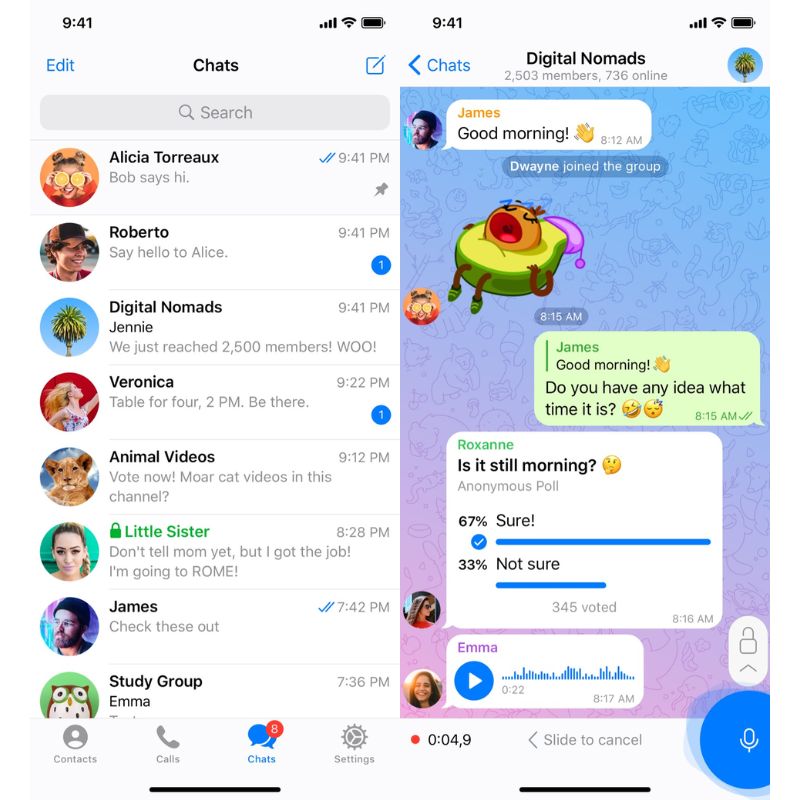
Great platform to enable niche community building; exclusive content or exclusive deals; offer direct customer support (using bots); targeted advertising (targeted content directly to members through the native platform), allowing for direct, un-algorithm-filtered communication with highly engaged users.
11. Threads (Meta)
- Founded in: July 2023
- Monthly Active Users (2025): Over 320 million globally. In the US, approximately 30 million MAU.
- Demographic: Website traffic shows 59% male, 41% female. Strong appeal to younger users, with 29.7% of website visitors aged 25-34 and 21% aged 18-24.
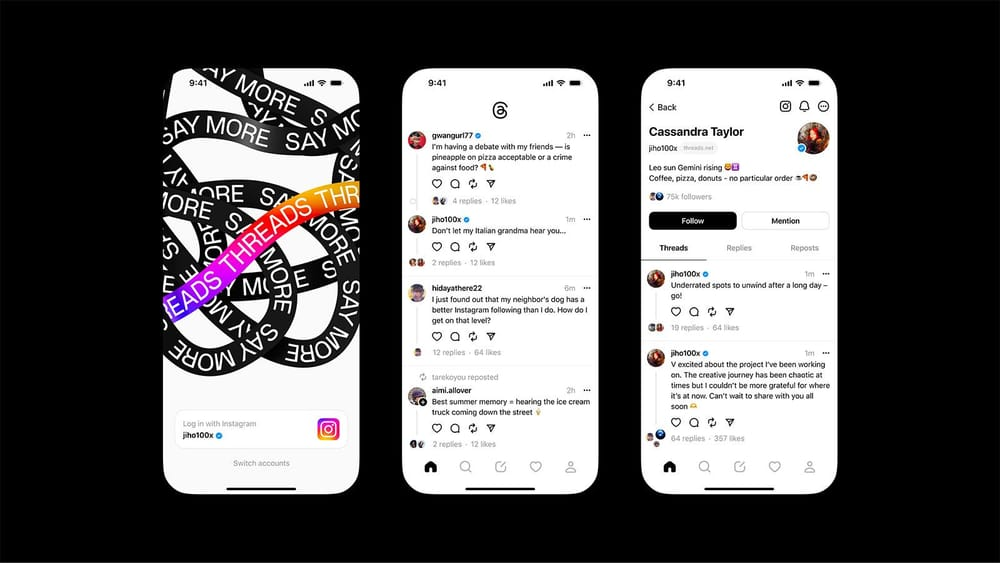
As Meta’s relatively new text-based platform, Threads has quickly established itself as a significant contender for real-time engagement and public discourse, largely benefiting from its deep integration with Instagram’s massive user base. For brand growth, it’s an excellent space for sharing concise, impactful content, participating in real-time conversations, and cross-promoting content to an existing Instagram audience.
Brands should experiment with quick updates and engage directly in trending conversations to establish their unique voice on this rapidly evolving platform, recognizing its rapid user growth since launch, exceeding 100 million users within days of its debut.
12. Reddit
- Founded in: 2005
- Monthly Active Users (2025): Projected 514.66 million globally, with over 256 million users in the US.
- Demographic: Globally, 59.8% male, 30.2% female, 10% other. In the US, 44% of 18-29 year-olds use Reddit. The largest audience demographics are 25-34 (23.09%).
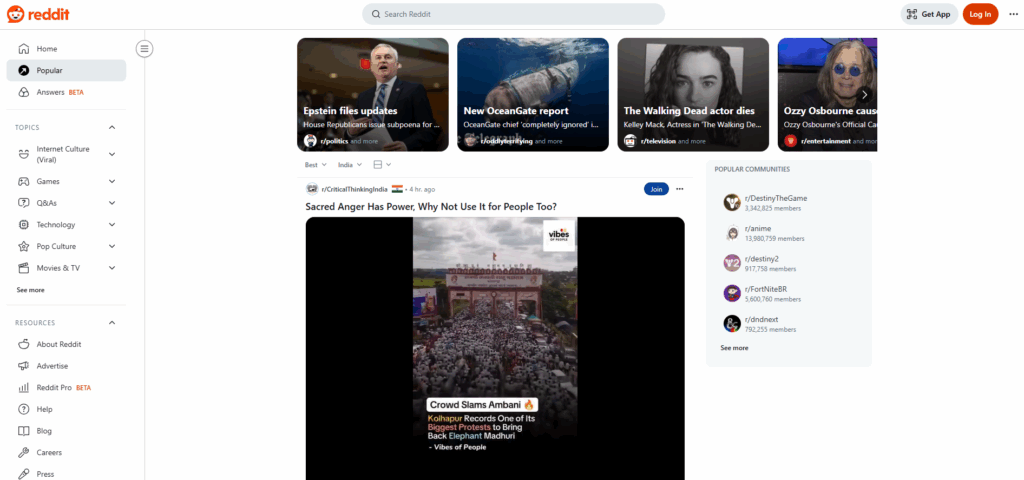
Reddit is a massive compilation of sub-forums (subreddits), centered around themes that lead to potentially very specific and often unfiltered discussions. Reddit is a tremendously valuable resource for accessing niche audiences and unfiltered conversations on very niche interests.
Brands can utilize Reddit for highly engaging communities, collect insights from targeted audiences, and interface authentically with a community of ardently interested people via recruiting “Ask Me Anything” (AMAs). Success relies upon understanding the “Reddiquette” of each subreddit to participate as a true member of the community instead of promoting one’s self.
13. Discord
- Founded in: 2015
- Monthly Active Users (2024): 200 million globally.
- Demographic: 66.6% male, 32.2% female. Favored by those 25-34 years old (53.4%). Most popular in the United States, Brazil, and India.
Originally a favorite among gaming communities, Discord has broadened its reach to accommodate a vast range of interest-based groups. It provides powerful tools for voice, video, and text communication, all while fostering a more private, group-oriented environment.
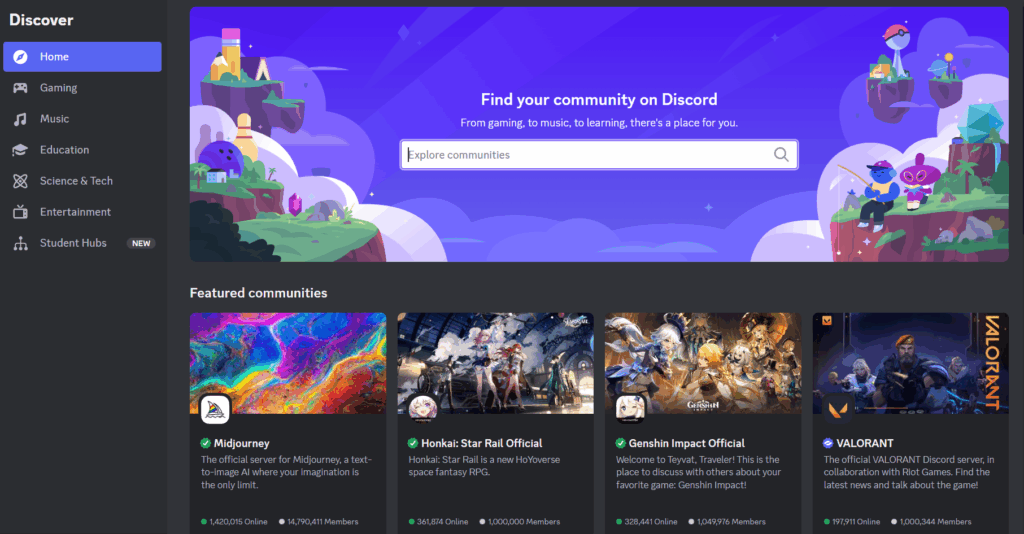
For brands, Discord is a fantastic avenue to cultivate engaged and loyal communities, allowing direct interaction with superfans, sharing exclusive content, and even facilitating dedicated customer support channels. Establishing a branded Discord server creates a unique and personal space to nurture a passionate fan base and offers them unmatched access, all while enjoying high engagement levels in specialized interest groups.
14. Google Business Profile
- Founded in: 2014 (as Google My Business, evolved from earlier local listings)
- Monthly Active Users (2025): Not typically reported as “users” in the same way as social platforms, but Google connects customers to American businesses 2 billion times every month via GBP. 18 million American businesses use Google’s free tools (like Business Profile).
- Demographic: Primarily used by consumers seeking local information. 86% of customers use Google Maps to search for businesses near them. Favored across all age groups looking for local services, with high trust
While not a traditional social media network, Google Business Profile is absolutely essential for local businesses, directly impacting local search rankings and enabling crucial customer engagement through reviews and Q&A features.
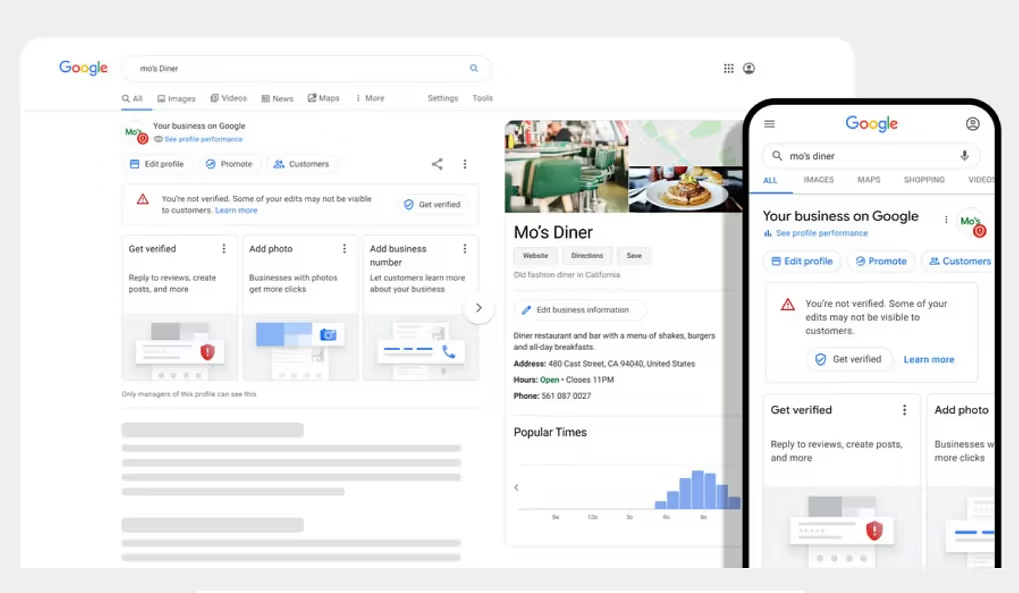
The best way to improve local SEO and draw more foot traffic is to keep your profile up to date, reply to every review, and post regular news and offers. These simple steps turn online searches for nearby products and services into real visits to your store.
It’s a critical touchpoint for consumers actively looking for local products and services, acting as a direct bridge between online search intent and offline visits.
15. Twitch
- Founded in: 2011
- Monthly Active Users (2025): Over 240 million unique visitors globally. In the US, estimated 36.7 million monthly active users.
- Demographic: Primarily male-dominated (63-65% male, 35-37% female globally). Young audience, with 73% of users aged 34 and under in the US. The largest age group in the US is 20-29 (35%) followed by 30-39 (34%).
While Twitch has primarily been a gaming platform in its previous years, they have added enough content in the last couple of years to evolve to other content types such as lifestyle, music and other creative streams. The greatest strength of Twitch is its live, interactive engagement which means it is ideal for live product demonstrations, live ‘Ask me Anything’ sessions and even building loyal communities devoted to shared interests.
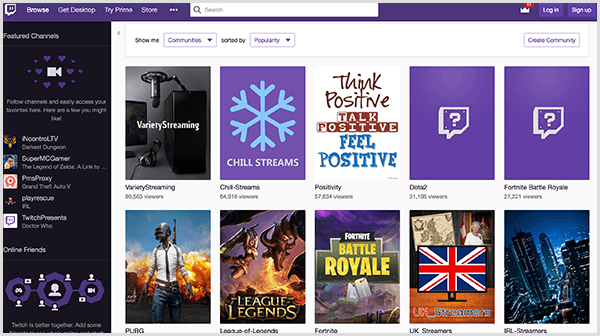
Brands can drive powerful results on Twitch by completing live product launches, working with popular streamers that are complementary to their brands and engaging with a loyal and dedicated community through direct interaction throughout performances and streams. This live, unscripted environment provides a high degree of authenticity and community connection.
16. Quora
- Founded in: 2009
- Monthly Active Users (2018 last reported): 400 million globally, with an estimated 35% of Americans using Quora.
- Demographic: Globally, 57% male, 43% female. It attracts a highly educated user base, with 65% having a college degree and 28% a graduate degree. Notably, 54% of adult US users report a household income >$100k, and users are 37% more likely to be in a management position.
Quora remains a viable site for Q&A content. Brands can showcase expertise, share useful content, and drive highly relevant traffic to their sites on Quora. The users of Quora, who in the US are very highly educated and earn high incomes, make Quora an excellent platform for expert positioning and thought leadership.
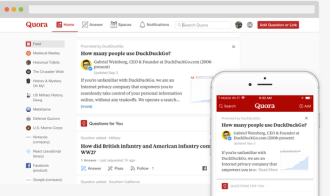
By answering questions in your industry with well-written and researched, thoughtful answers, brands can position themselves as a source of authority, and find trends in audience pain points through common questions asked. Quora Ads also allows brands to reach highly targeted audiences, and is a useful channel along with their organic content.
17. YouTube Kids
- Founded in: 2015
- Monthly Active Users (2025): Even though the official statistics already contain the smaller YouTube Kids category, almost 80% of American parents of children under the age of eleven report that their kids watch YouTube videos. This suggests a strong usage of the Kids platform.
- Demographic: The service is aimed specifically at children and families, creating a more curated and safer space for younger viewers.
YouTube Kids stands apart from its main platform with its own set of content guidelines, ensuring a specially curated and secure environment for children’s video content, which appeals to brands that target kids and families.
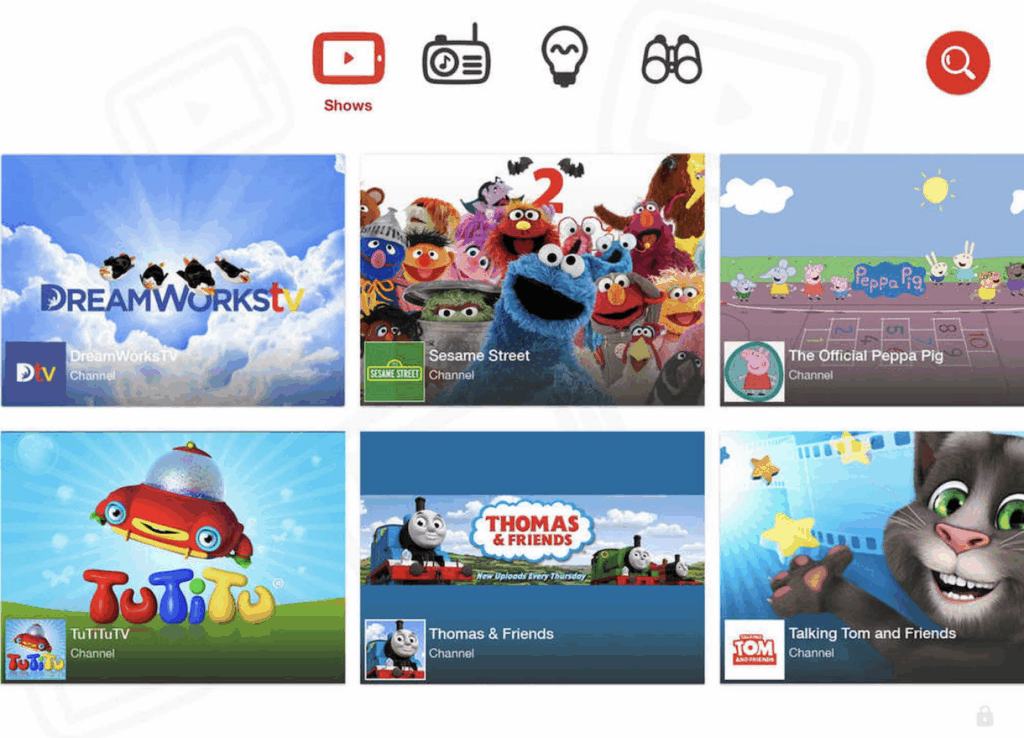
It is an ideal space to share educational content, present entertainment expressly for younger children, and communicate your brand messaging for family friendly products or services responsibly.
Brands can use the channel to help build trust with parents while connecting directly with their young target audience via appropriate, entertaining video content.
18. Spotify
- Founded in: 2006
- Monthly Active Users (2025): 640 million globally. In the US, projected 100.6 million users for 2025.
- Demographic: Globally, 58% male, 42% female. The largest age group is 25-34 (29%) followed by 18-24 (26%), meaning over half of its users are between 18-34 years old.
While Spotify is most well-known as a music and podcast streaming service, it has something special to offer brands looking to connect through content. Spotify users can engage with one another in a variety of fun and interactive ways, using the platform’s social features (like shareability, collaborative playlists, etc.). Podcasts are particularly popular with brands adventurous with long-form brand storytelling and native advertising.

Brands can intentionally extend their reach and create a closer and more personal connection with their audience, by cleverly placed audio ads, brand playlists that engage the audience, podcast advertising, or simply creating their own branded podcasts or audio series.
19. Apple Podcasts
- Founded in: 2005 (podcast support in iTunes), standalone app 2012
- Monthly Active Users (2025): Projected 29.2 million listeners in the US. Globally, over 4.3 million podcasts are available.
- Demographic: In the US, 51% male, 49% female globally. 48% of all podcast listeners are between 12-34 years, with a significant 43% of the 35-54 age bracket being monthly listeners. It attracts a highly educated audience, with many having college degrees.
Apple Podcasts, similar to Spotify, is a favorite space for hosting and listening to shows, especially for folks using iPhones and iPads. The built-in social features and review buttons let listeners chat about episodes and even meet others who share the same interests.
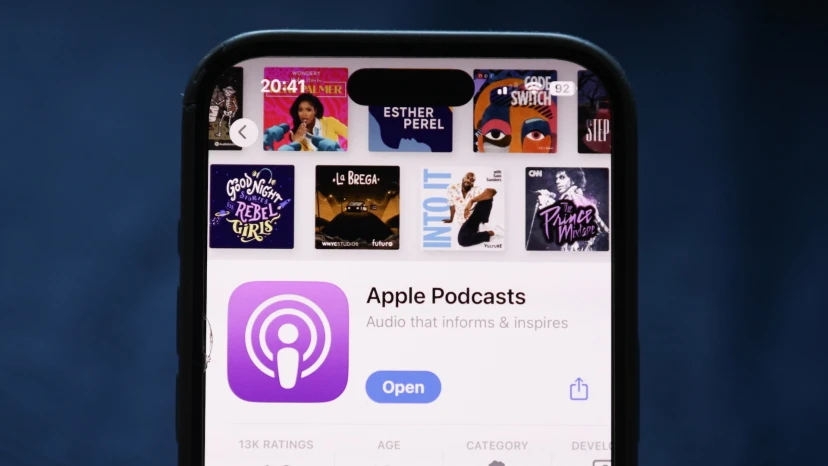
Brands can use this platform to distribute their own branded podcasts, promote popular podcasts that relate best to their target audience, and interact with their audience through reviews and community features that surround captivating audio content. It is a great channel to get the attention of an engaged, often affluent and educated, audience who enjoys longer, on-demand content.
20. Yelp
- Founded in: 2004
- Monthly Active Users (latest 2020 data): More than 178 million different people visit each month, whether they use a phone, computer, or the mobile app.
- Demographic: Yelp may not have a special update just for 2025, yet it still matters a lot for people looking at local reviews. Almost everyone who finds a business on the site 97% ends up spending money there, and more than half, or 51%, buys something the very same day. That shows how eager different groups are to book nearby services once they read those reviews.
Yelp is still one of the top sites people check before picking a local business, and its power comes straight from the reviews everyday customers leave. Because of that, keeping your Yelp page up-to-date isn-t just smart-it-s essential if you want nearby shoppers to notice you and trust what you offer.
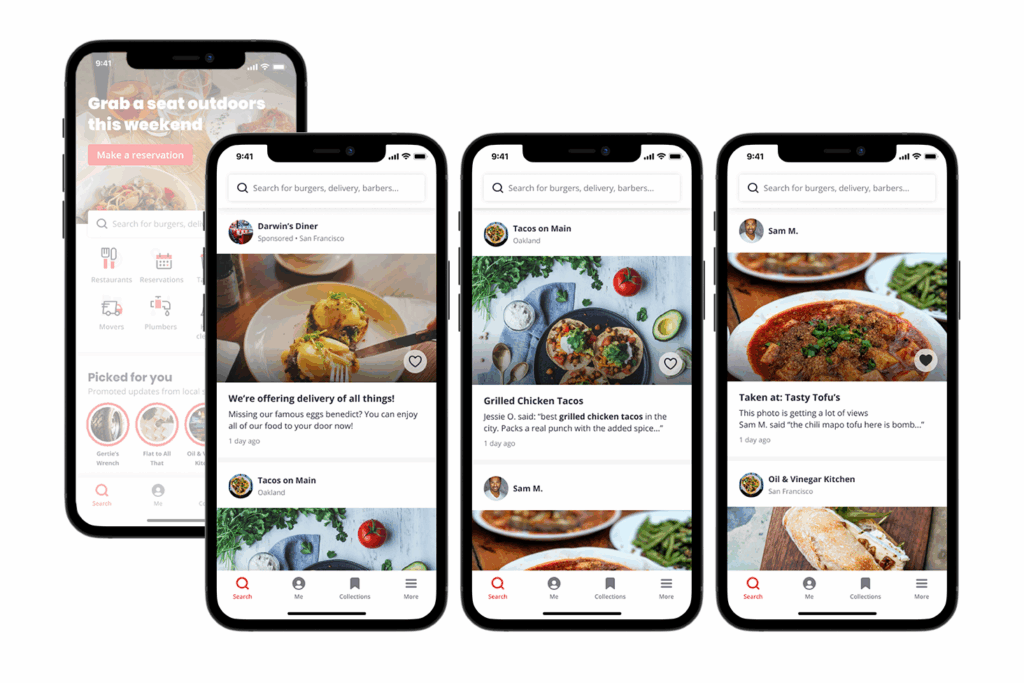
To show your business really cares, you should reply to every single review, whether it-s a glowing pat on the back or a tough critique. Doing this not only proves good customer service to the person who wrote the comment, it also earns trust from others in the neighborhood who will see how you handle feedback. Besides, a clean, fully filled-out profile can up your rank in local searches and send more feet through your door.
21. Goodreads
- Founded in: 2006
- Monthly Active Users (2023): Goodreads welcomes roughly 45 million unique readers each month around the world, and nearly 20 million of those visitors come from the United States.
- Demographic: American members make up about 48% of the sites global audience. The community is mostly female-roughly 60 percent-and younger overall; people aged 25 to 34 represent around 30 percent, while those 18 to 24 add another 21 percent.
For authors, publishers, and brands intrinsically linked to books, reading, or literary content, Goodreads is an absolutely vital community. Goodreads works like the online neighborhood where people swap book reviews, shout-out favorites, and dive deep into literary chats.
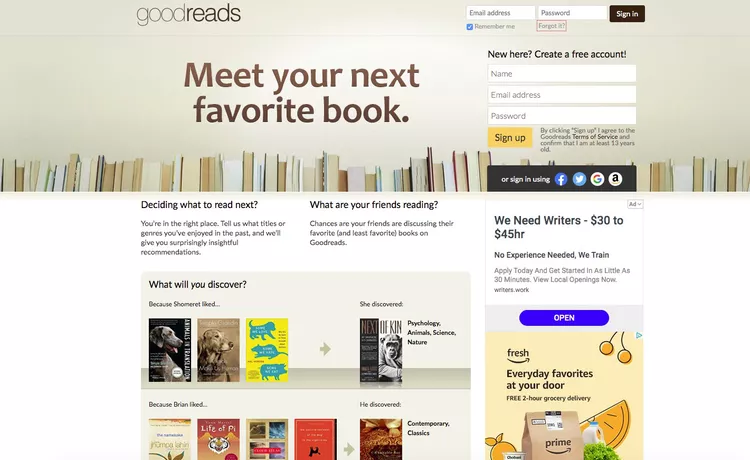
For brands, the site is a handy stage to spotlight new titles, let readers chat straight with authors, set up fun giveaways, and build a loyal bond with eager book lovers. That devoted crowd turns Goodreads into a smart spot for reaching fans who already live and breathe stories.
22. Product Hunt
- Founded in: 2013
- Monthly Active Users (2025): Averages 3.9 million monthly visitors.
- Demographic: US users comprise 25.93% of traffic. The audience consists primarily of tech enthusiasts, early adopters, entrepreneurs, and investors. Website traffic generally skews male (around 59.98% male from US).
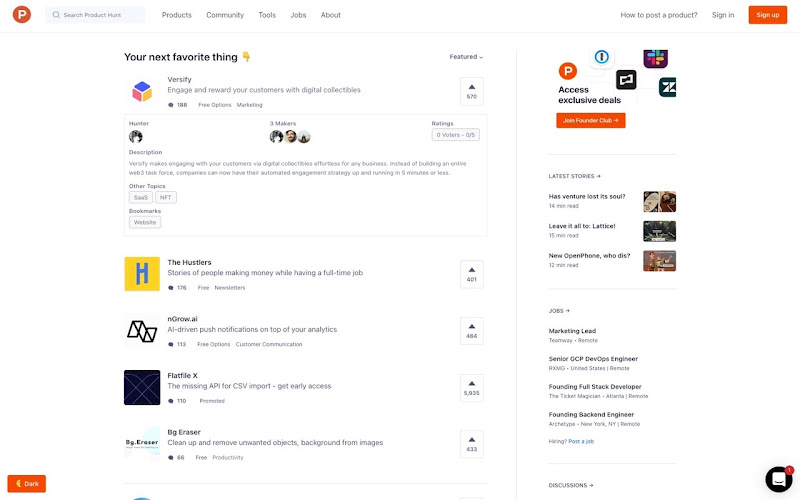
Product Hunt is a welcoming online community where users can locate, discuss, and exchange the newest tech tools, apps, and products. The site provides a clever method for both small startups and larger brands launching something new to generate early buzz, get candid feedback from a vibrant community of tech enthusiasts, and ride a wave of upvotes that can significantly increase visibility.
A successful launch day on Product Hunt can result in a flurry of interested early adopters, some attentive investors, and big-armchair coverage in the tech community.
Emerging Trends to Watch in 2025
In addition to specific platforms, there are several bigger picture trends that will affect social media marketing in 2025:
- Video Dominance (Especially Short-Form): Video continues to be the predominant content type. Brands will need to keep investing in quality and entertaining videos on each and every platform, thinking separately about the length and style for each platform.
- AI-Powered Content Creation and Optimization: AI will continue to be leveraged to help with not just ideation but also content creation (including images, videos, and captions), scheduling, and performance analysis, creating a lot of efficiencies in many workflows.
- Social Media as a Search Engine: Younger audiences—and increasingly older ones—are using TikTok and Instagram for product discovery. Optimizing content with hashtags, keywords, and alt-text is now critical.
- Authenticity Over Perfection: Content that is highly polished and perfected is being replaced by more authentic, relatable, genuine, evolution, and even “raw” content. Behind-the-scenes content, user-generated content (UGC), and unscripted content create deeper connections than just a polished post by a brand.
- Niche Communities & Private Spaces: As feeds become more crowded and oversaturated with a lot of the same entertainment, users are increasingly seeking out smaller, niche communities on platforms like Discord, Facebook Groups, and even private broadcast channels on Instagram.
- Social Commerce Evolution: As solutions for natively purchasing within social media apps (Instagram Shopping, TikTok Shop, Pinterest Product Pins) grow and develop, consumers will increasingly demand in-app shopping experiences instantly available to them as a priority.
- Micro and Nano-Influencers: Brands are moving away from traditional celebrity influencers to micro- and nano-influencing with audiences that highly engage and show authentic interest in niche markets.
- Increased Focus on Data Privacy: Consumers are gaining an awareness of their digital footprints more than ever. User input and transparency about brands’ data usage, data appropriateness, and explicit ethical practices can go far in building trust.
- Augmented Reality (AR) Experiences: AR is evolving into immersive try-on’s (product), interactive ads (brands), and product or brand experiences that bridge the digital and physical realms.
Crafting Your 2025 Social Media Strategy
With such a diverse landscape, how do you decide which platforms are best for your brand?
- Know Your People: This is the most important consideration. Where is your target audience spending their time before it gets to you? What content are they consuming, and how are they consuming it? You can research the demographics and preferences by researching the respective platforms.
- Define Your Objectives: Do you want brand awareness, leads, sales, customer service, or community building? Each platform has strengths and weaknesses for different objectives.
- Evaluate Your Resources: Creating quality content will take a significant amount of time, money, and creativity on a variety of platforms. Think about the platforms you can consistently deliver on time and meet deadlines on.
- Content is King (and Context is Queen): While crafting your content, it’s important to tailor it to the specific platform, as each one has its own unique formats, styles, and best practices. A video on TikTok will not have the same effect on LinkedIn, and vice versa.
- Use Analytics: Always measure the performance of each platform in terms of your objectives (reach, engagement, conversions or other metrics). With this information, you can refine your approach and keep an eye out for any modifications to your strategies.
- Be Agile and Experiment: Social media is always moving quickly! Make sure you are willing to try a new feature, try a new content type, or try a new related topic.
By 2025, growing a brand successfully through social media will involve a lot more than just sharing messages. It’s really about building genuine relationships, delivering value, leveraging new technologies like AI, and figuring out how to operate in a complex and ever-changing digital world. When you take the time to understand your audience, prioritize authentic connections, and use a well-rounded mix of formats, you can truly drive brand growth.



